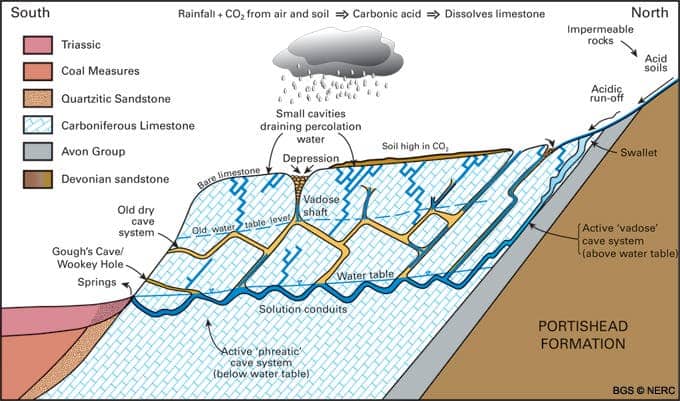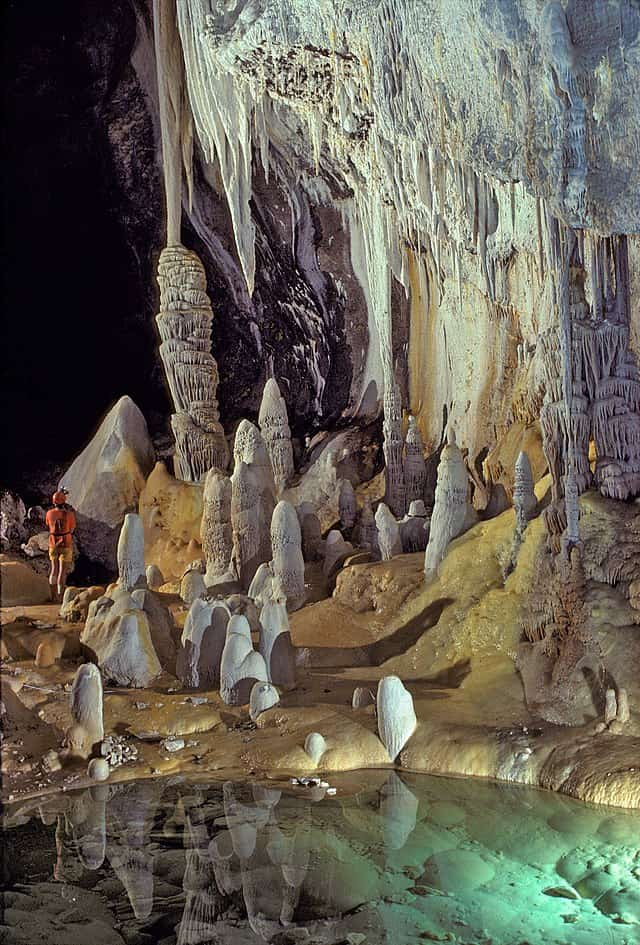Caves are a fascinating feature of the Earth’s geology that has attracted the attention of both scientists and explorers for centuries. These subterranean voids are formed through a variety of geological processes, ranging from the chemical dissolution of soluble rocks to volcanic activity. Caves also play an important role in several ecosystems and have even helped humans throughout our evolution — but for all their enticing history, they’re still a mystery to most people.
Understanding the types of caves that exist and the mechanisms behind their formation is an important part of geology and our understanding of the Earth’s dynamic geological processes. There are several ways of classifying caves. We’ll go through the most common types of caves before discussing them in more detail and addressing some of the more uncommon types:
- solutional caves are generally formed in soluble rock like limestone or gypsum or dolomite. They form when acidic water dissolves the rock, seeping through the bedding planes. These are the most common type of cave
- lava caves are also called primary caves because they form at the same time as the surrounding rock. They are formed when lava flows and cools down leaving a hollow tube. Lava caves include but are not limited to lava tubes.
- sea caves are quite self-explanatory — they’re formed by the sea, due to the constant activity of waves. They can be both over and underwater and typically have large openings and spectacular views.
- glacier caves are caves not in rock, but in glaciers. They form when water flows inside the glacier, producing a tunnel-type formation.
There are also several more uncommon types of caves which we’ll discuss further. For now, it’s time to get our hands dirty.
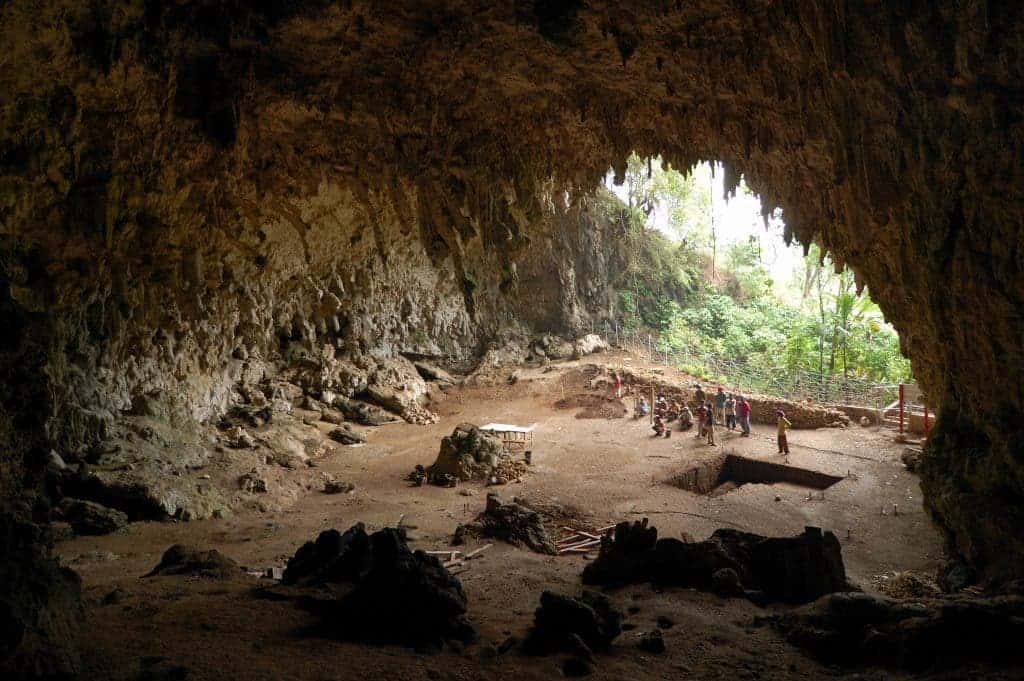
What caves are
Before we start looking into the types of caves with more detail, let’s analyze just what caves are. Not any hole in an underground space is a cave. In order for it to be called a cave, the structure must be natural and large enough for a human to enter. This part of the definition isn’t so strict, though.
In most basic geography books, caves are defined as natural underground structures formed through the dissolution of rock. But while that does describe the most common types of caves, caves can be formed by various geological processes and can vary greatly in size and structure.
For now, let’s look at the most common one.
Solutional caves
Solutional caves are some of the most exciting geological features on Earth. These are by far the most common caves — so common that for most people, they’re probably synonymous with ‘caves’ in general.
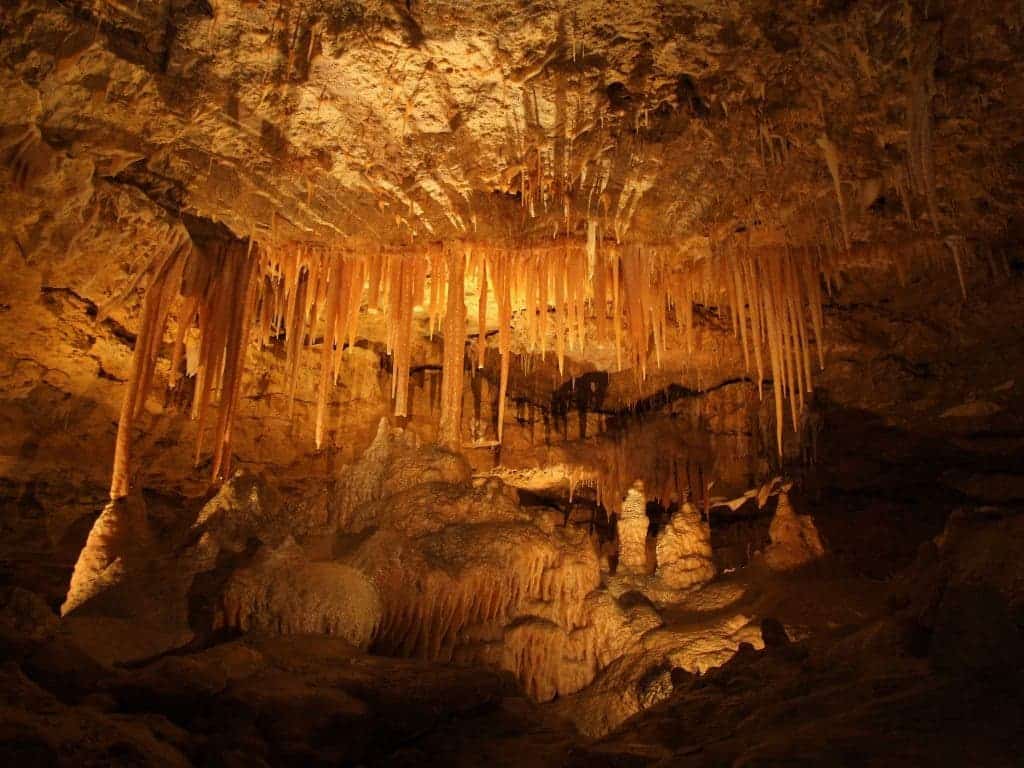
Solutional caves form in carbonatic rocks (most commonly limestone, but also chalk, dolomite, marble, salt, and gypsum) that can be dissolved by water. They’re not dissolved in a day or a week, mind you: they typically take millions of years to form, with water slowly eroding away at the rock. Solutional caves form in geological time, on longer timescales.
Regardless of the type of rock, the process is usually pretty similar. As water falls on the ground, it accumulates carbon dioxide from the atmosphere, becoming a very weak acid. But even this “weak acid” can create great things over time: as the water percolates through the rock, it dissolves more and more, creating bigger and bigger voids.
How caves form, via British Geological Survey.
Over time, these channels and openings widen and deepen, creating larger and more complex underground networks. Sometimes, they stay relatively small; other times, they can reach enormous sizes. As the water continues to flow through the cave system, it leaves behind deposits of minerals, such as calcite, that slowly build up into formations like stalactites and stalagmites.
Many solutional caves also become their own ecosystem, hosting are home to a diverse array of plants and animals that have adapted to life in the dark, underground environment. These include unique species of bats, blind fish, and cave crickets, among others.
Solutional caves, like any other cave, should only be explored with maximum care. Some are managed, featuring lighting, guides, and so on — but most are ‘wild’. Caves are prone to flooding and collapse and can be dangerous. You should only explore a cave if you really know what you’re doing.
Lava caves
Primary or lava caves form at the same time as the rock around them, as a result of volcanic activity.
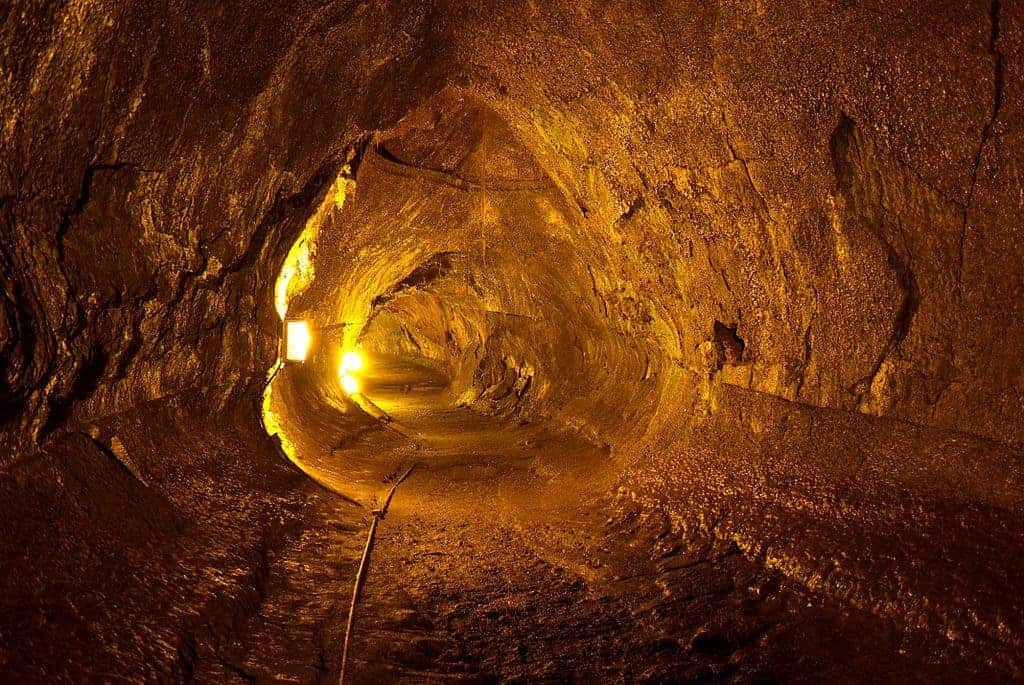
Lava caves are almost always lava tubes, formed by flowing lava. When magma from the interior of the Earth rises toward to the surface, it starts to cool down. As the lava flows, it cools down and creates a solid crust. Liquid lava continues to flow beneath that crust, and most of it flows out, leaving behind a hollow tube. This doesn’t happen with all volcanic eruptions, however.
Lava tubes aren’t formed only on Earth, but also on the moon and on Venus. Basically, anywhere there is volcanic activity in the universe, lava tubes can form. In some rarer circumstances, these caves can form outside of lava tubes. Rift caves, lava mold caves, open vertical volcanic conduits, and inflationary caves can all form due to volcanic activity.

Just like solutional caves, volcanic caves can also create unique ecosystems, and they too should be explored with utmost care. However, they don’t form stalactites and stalagmites — that type of cave formation emerges only from the dissolution of rock in water, whereas volcanic cave form through the cooling of lava. However, they can have other distinctive formations, particularly a wavy texture to the floor, ceiling, and walls, as the lava cooled down as it was flowing.
Sea caves
Sea caves are found on shores all around the world, also usually in carbonatic rocks that can be slowly dissolved by water. However, the action of sea water is somewhat different.

The constant, relentless action of waves comes crashing down against walls, creating fissures and “attacking” the weaker part of the rocks and in time, starting to erode them. Sand and tiny bits of gravel can also amplify the corrosion. A special case of sea caves is called littoral caves, where the waves act on very weak areas, such as faults or bedding plane contacts. The waves “speculate” the rock’s weakness and can create a cave much faster.
Sea caves are often affected by tides and are spectacular places to explore but — you’ve guessed it — can be pretty dangerous.
Glacier caves
Until now, we’ve talked about rocky caves — but caves can also form in glaciers.
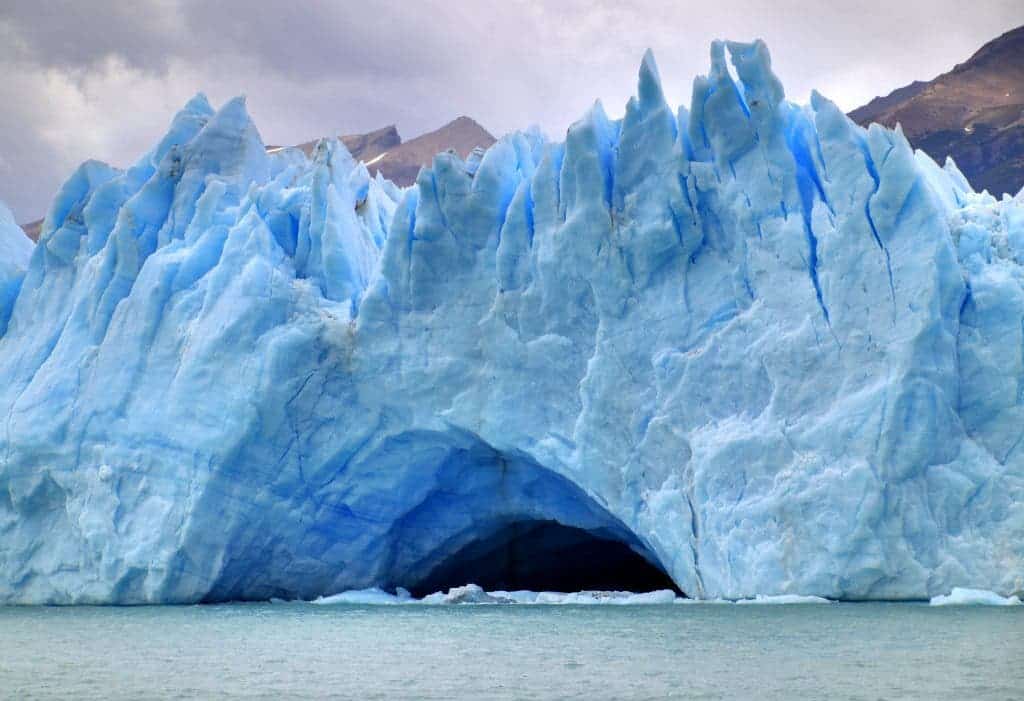
They are similar to solutional caves, but they can form much faster because water can dissolve ice much faster than it can dissolve rock. Melting ice and flowing water within the glacier can create surprisingly large ice caverns, which are regarded as caves. Though they are sometimes referred to as “ice caves,” that term is normally reserved for rocky caves with year-round ice formations inside.
Other types of caves
As we mentioned above, there are other types of caves too, but they’re much rarer.
- Fracture caves form when a soluble layer, such as gypsum, dissolves. After the layer disappears, the rocks around it can collapse, creating a fracture cave.
- Talus caves are formed by the openings among large boulders that have fallen down into a random heap. They should be avoided as they’re usually unstable and dangerous.
- Eolian caves are formed, like their name says, by the wind. They form only in deserts, driven by the sandblasting effect of silt or fine sand being blown against a rock face. They can be surprisingly large and impressive.
- Anchialine caves are usually coastal and contain a mixture of freshwater and saline water (usually sea water). They occur in many parts of the world and often have highly specialized endemic fauna.

A few cave facts
- It’s not clear how many caves there are in the world. In the US alone, researchers have discovered over 45,000 caves, so the real number is likely in the hundreds of thousands.
- The cave system with the greatest total length of surveyed passage is Mammoth Cave in Kentucky, US, at 685.6 km (426.0 mi).
- The second largest cave (that we know of, at least) is actually an underwater cave: Sistema Sac Actun in Yucatán, Mexico at 335 km (208 mi).
- The deepest known cave — measured from its highest entrance to its lowest point — is Veryovkina Cave in Abkhazia, Georgia.
- Humans have used caves for shelter, food storage, and mushroom farming. Of course, in some cases, caves were also used as hideouts from the law.
- Fossils found in caves (both from animals and human species) are very important to understanding our evolutionary history.
- Caves tend to have a constant temperature, because they’re isolated from the outside world. They’re generally quite cool.
- However, some caves, like the Giant Crystal Cave in Mexico, are hot because they are in spots of geothermal activity.
- Since their formation is intrinsically linked with water, solutional caves often have lakes or other water formations inside of them.
- Some caves develop extreme, unique environments. The Movile Cave in Romania, for instance, has an ecosystem abundant in hydrogen sulfide and carbon dioxide, but low in oxygen. Life in the cave has been separated from the outside for the past 5.5 million years and it is based completely on chemosynthesis rather than photosynthesis.
